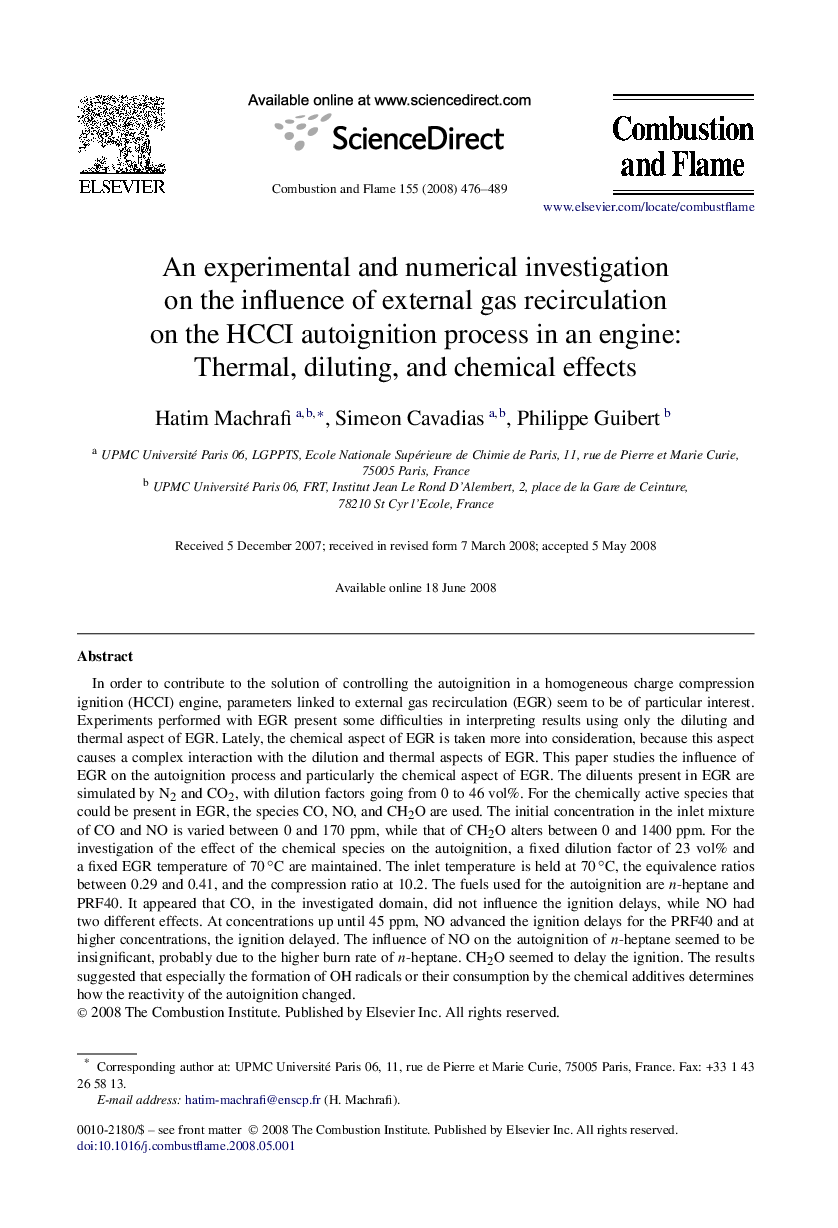| کد مقاله | کد نشریه | سال انتشار | مقاله انگلیسی | نسخه تمام متن |
|---|---|---|---|---|
| 170009 | 458062 | 2008 | 14 صفحه PDF | دانلود رایگان |

In order to contribute to the solution of controlling the autoignition in a homogeneous charge compression ignition (HCCI) engine, parameters linked to external gas recirculation (EGR) seem to be of particular interest. Experiments performed with EGR present some difficulties in interpreting results using only the diluting and thermal aspect of EGR. Lately, the chemical aspect of EGR is taken more into consideration, because this aspect causes a complex interaction with the dilution and thermal aspects of EGR. This paper studies the influence of EGR on the autoignition process and particularly the chemical aspect of EGR. The diluents present in EGR are simulated by N2 and CO2, with dilution factors going from 0 to 46 vol%. For the chemically active species that could be present in EGR, the species CO, NO, and CH2O are used. The initial concentration in the inlet mixture of CO and NO is varied between 0 and 170 ppm, while that of CH2O alters between 0 and 1400 ppm. For the investigation of the effect of the chemical species on the autoignition, a fixed dilution factor of 23 vol% and a fixed EGR temperature of 70 °C are maintained. The inlet temperature is held at 70 °C, the equivalence ratios between 0.29 and 0.41, and the compression ratio at 10.2. The fuels used for the autoignition are n-heptane and PRF40. It appeared that CO, in the investigated domain, did not influence the ignition delays, while NO had two different effects. At concentrations up until 45 ppm, NO advanced the ignition delays for the PRF40 and at higher concentrations, the ignition delayed. The influence of NO on the autoignition of n-heptane seemed to be insignificant, probably due to the higher burn rate of n-heptane. CH2O seemed to delay the ignition. The results suggested that especially the formation of OH radicals or their consumption by the chemical additives determines how the reactivity of the autoignition changed.
Journal: Combustion and Flame - Volume 155, Issue 3, November 2008, Pages 476–489